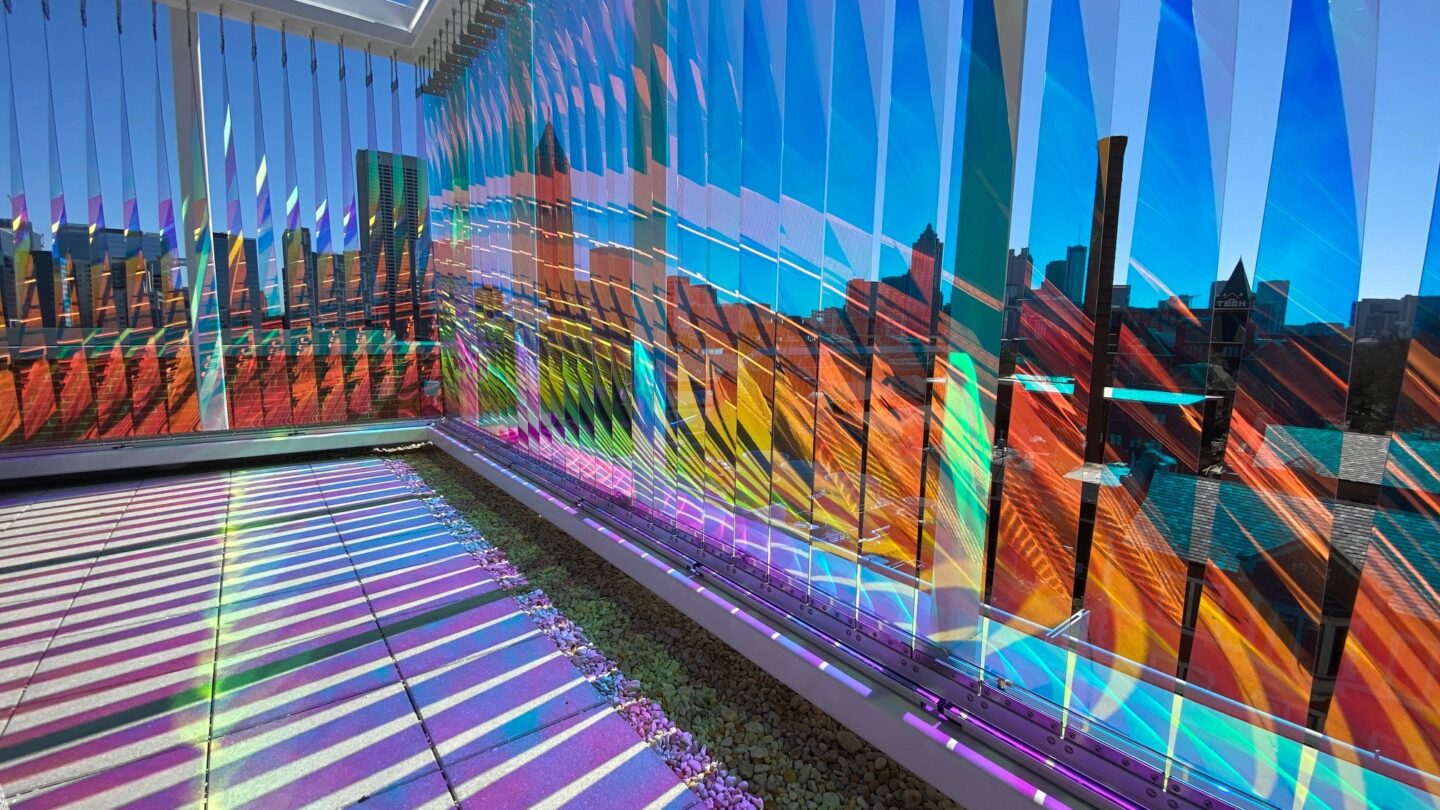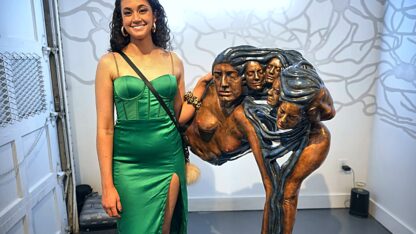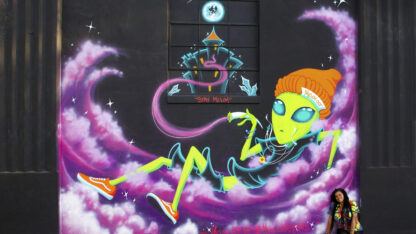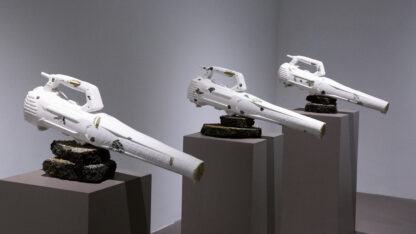A new permanent installation at Georgia Tech promotes safety and art

A new installation promoting art and safety is on permanent display at the Crosland Tower on the campus of Georgia Tech. Tristan Al-Haddad, professor at Georgia Tech’s School of Architecture and owner of Formations Studio, was commissioned to create the Crosland Chroma Project. The installation surrounding the terraces on the seventh floor of Crossland was designed for aesthetic and safety reasons. Al-Haddad joined “City Lights” host Lois Reitzes via Zoom to explain how his team’s newest creation serves its space in form and function.
Interview highlights:
A field in balance between art and engineering:
“My entire life, my entire career has been a balance between what I would call the technical and the conceptual, and so often we find those two camps not really aligned, and sometimes not even in dialogue,” said Al-Haddad. “At the end of the day, ideas without materiality are just ideas. And that’s okay too, but the way in which we work and what we’re really after is the material expression, the material actualization of the idea, and so that requires this constant sort of dialogue between the conceptual ideas, the aesthetic intent, the perceptual intent and the technical realities of making; of the material world of physics, of wind, of gravity, of all of these things.”
“The piece, ‘Crosland Chroma,’ I describe it as the lovechild of public art and public safety,” Al-Haddad continued. “The piece is meant to really be a perceptual piece, an abstract perceptual piece meant to be experienced, meant to be felt. It’s meant to bring a kind of playful delight … and bodily experience to being on the terraces, and feeling the way in which the light and the views are constantly shifting.”
A visual metaphor expressed through light diffraction:
“The piece is made out of 192, what would be called ‘dichroic polycarbonate’ fins that are twisting 90 degrees from the bottom to the top,” explained Al-Haddad. “That dichroic material takes the … pure light from the sun and breaks it into a chromatic spectrum. So conceptually, what the piece is doing is it’s talking about, ‘How do we have an incredible range of diverse ideas coming from the idea of the library as the body of knowledge?’”
He went on, “If light is the body of knowledge, then this spectral experience is really the diversity of ideas that is captured within the library. And beyond that, the university itself — that we have so much diverse thinking, so much diverse student population and faculty population, then it really becomes a representation of the diversity in the library and the university at large.”
How “Crossland Chroma” provides safety while preserving the view:
“The piece is on the seventh floor of the Crosland Tower, which is part of the central library at Georgia Tech, and it’s about a hundred feet above the ground, so obviously, there are safety issues that people can get to the edge. And so the way in which it works, it actually has to work as the code-compliant guardrail.”
“These dichroic polycarbonate fins are in line, and they create a kind of continuous plane up until about 42 inches above the finished floor of the terraces … By the time they get to the top, they’re perpendicular,” said Al-Haddad. “Not only does it create this kind of spectral range that we get as the light passes through these little nanotechnology prisms that you can’t really see … It’s a continuous plane, and the fence twists 90 degrees to open, almost to kind of dissolve visually, and to allow for the view back to Midtown because there’s really a spectacular view of Midtown and Downtown.”
More on the Crosland Chroma Project at the Georgia Tech campus library is at www.library.gatech.edu/news/crosland-chroma-project-coming-soon.








